
Choose













Choose











As we eagerly anticipate the first blooms of spring, ready to bring a welcome splash of colour to our streets after the long winter months, we’re thrilled to share with you our latest edition of the Green Guide Croydon magazine, a publication that celebrates and connects our local community.
This issue, our Driven Lives series, dives into the world of education with an interview with Vanessa Townsend, the driving force behind Strand on the Green Infant and Nursery School (p20). Gain valuable insights into the challenges of being a mother and leading a school in today’s ever-changing educational landscape.



EDITORS
Andrea Halsey
For those seeking to enhance their wellbeing, we explore the benefits of Pilates Reformer (p8) and how this dynamic exercise system can improve strength, flexibility and posture.
Further afield, we take you on a whirlwind tour of Hong Kong (p24), a vibrant metropolis where East meets West. Immerse yourself in the city’s rich culture, stunning scenery and culinary delights.
Closer to home, our ‘Start Them Off Young’ series continues with a look at gymnastics for children (p14). Discover the many physical and mental benefits of this popular sport.
We also celebrate the magic of books for children (p28), exploring how reading can spark imagination, encourage creativity, and instil a lifelong love of learning.
And that’s not all! This issue, we have two amazing giveaway prizes! One lucky reader will win a historic city sightseeing helicopter tour for two, and the runner-up will receive a £100 Virgin Experience gift voucher. Turn to page 22 to find out how to enter.
A big thank you to all our advertisers. Some have offered exclusive discounts for Green Guide readers, so keep an eye out when reading.
Finally, we’re delighted to announce that you can now subscribe to receive a digital copy of our magazine delivered directly to your inbox. Email magazine@localgreenguide.co.uk to sign up.
We hope you enjoy our latest issue, and as always, we welcome your feedback. Please do get in touch and let us know what you’d like to see more of in future issues.
Happy reading!
Green Guide Team

COVER
Croydon March/April 2025
Daniela Milusheva
Richard Richards
London, N18 2PG NEW BEGINNINGS: WELCOME TO SPRING
EDITORIAL OFFICE
Unit 4 Georgiou Business Park
Second Avenue
CONTRIBUTORS
Georgiana Jinga
Kristina Kirilova
Vandita Rai
DESIGNER
Moreme Molai
Green Guide Chiswick is designed, published, and promoted by Local Green Guide Ltd. While we have taken every precaution to ensure the accuracy of this publication and believe the statements herein to be correct, the publishers and promoters cannot assume responsibility for any inaccuracies. Reproduction of any portion of this publication without prior permission is strictly prohibited.
© Local Green Guide Ltd. The publishers do not endorse or provide recommendations for any of the advertisers, and the presence of their advertisements does not imply any endorsement or recommendation. We also do not assume liability for any deficiencies in the products or services provided by our advertisers. Additionally, we retain the right to cease future advertising collaborations with any advertiser found to have disappointed our readers.

The recent introduction of the Employment Rights Bill marks the most signi cant upgrade to workers' rights in a generation, aimed at ending unfair employment practices and fostering economic growth. While these changes are a major step forward in delivering a modern, fair workplace, they also bring new challenges for employers in managing compliance and controlling recruitment costs.
BASIC RIGHTS FROM DAY ONE
MODERN COMPLIANCE DEMANDS

Employees now gain protections such as unfair dismissal safeguards, parental and bereavement leave, and strengthened statutory sick pay from their rst day on the job.
ENHANCED PROTECTIONS FOR WOMEN AND FAMILIES
Dismissal protections for pregnant workers and new mothers have been bolstered, and exible working is set to become the default where practical.
NAVIGATING THE CHANGES
EXPERT COMPLIANCE SUPPORT


A new statutory probation period for hires will be introduced, and a Fair Work Agency will enforce rights such as holiday pay and provide guidance to employers.
END OF EXPLOITATIVE PRACTICES
The Bill bans zero-hour contracts (while allowing exibility for those who prefer them) and outlaws unethical re-and-rehire tactics.
While these measures aim to create a fairer, more secure workplace, they also add complexity to recruitment and employee management processes.
PARTNERING WITH COMPLEX RECRUITMENT CAN HELP YOU NAVIGATE THESE CHANGES WHILE KEEPING COSTS UNDER CONTROL. HERE’S HOW:
COST MANAGEMENT
With a deep understanding of the new laws, we ensure every hire is compliant from day one, protecting your business from costly errors.
EFFICIENT TALENT ACQUISITION
We streamline the hiring process, reducing administrative burdens and time-to- ll vacancies.
By focusing on long-term retention and suitability through e ective recruitment, we help you avoid the expense of high turnover rates.
FLEXIBLE WORKFORCE SOLUTIONS
Whether you need temporary or permanent sta , we provide tailored hiring solutions to meet your needs and mitigate risk.
These changes are designed to boost pay, productivity, and retention, ultimately creating a modern economy where work pays for both employees and businesses. With our support, you can embrace these reforms while focusing on what you do best—growing your business.



Sat
- 10th May
Exhibition Gallery & Clocktower Atrium
Location
The Museum of Croydon museumofcroydon.com/exhibitions
Tue
17:00 -19:00
Croydon College Open Event
Location
College Road, Croydon allevents.in/croydon/croydon-collegeopen-event/100001002870762447
Tue 11 18:30 - 21:30
Live Event Photography Class
Location
Stanley Arts
12 South Norwood Hill, SE25 6AB stanleyarts.org/event/live-event-photography-class/2025-03-11
Mon 17 19:30
The Sixteen’s 2025 Choral Pilgrimage Concert
Location
Croydon Minster, Church Street, Croydon, CR0 1RN thesixteen.com
Sat 01 12:00 - 16:00
Arcadia: Seeds of Change
Location
Stanley Arts, 12 South Norwood, Hill stanleyarts.org/event/arcadia-seedsof-change
Sat 08 10:30 - 12:45
Pottery Wheel Taster Location
Claykilncraft Open Access Pottery Westminster, WC2N 5DN allevents.in/croydon
Fri
14 19:00 - 21:00
BIG FAT QUIZBOX
Location
99 George St, Croydon CR0 1LD boxpark.co.uk/events/big-fat-quizbox-3/?locations=croydon
Mon 03 10:30 - 12:00
Knitting and adult colouring
Location
Croydon Central Library libraries.croydon.gov.uk/ events/189278
Sat 08 - 16th March
Beer festival Location
The George, 17-21 George St Croydon, CR0 1LA croydonbid.com/whats-on/ spring-beer-festival
Sat 15 12:00 - 15:30 & 16:30 - 20:00
Croydon Whisky Festival Location
Stanley Arts
12 South Norwood Hill, SE25 6AB croydonwhiskyfestival.com




Tue 18 16:00 - 17:00
Book buddies
Location
Ashburton Library libraries.croydon.gov.uk/events
Sat 22 19:30
Croydon Bach Choir Spring Concert
Location
St Matthew’s Church Chichester Road, Croydon CR0 5NQ croydonbachchoir.org/events/20242025-season
29 18:00
Space Cowboy
Location
Fairfield Halls, Croydon fairfield.co.uk/events/ space-cowboy-2025 Sat
Wed 02 18:00
Bexley Festival of Music 2025
Location
Fairfield Halls, Croydon fairfield.co.uk/events/bexleyfestival-of-music-2025
Wed 09 19:00
WeRun Croydon Community 5k
Location
Addiscombe Boys and Girls Club Stroud Green Way, CR0 7BE eventbrite.com
Croydon XL Comedy Club with Simon Brodkin
Location
Fairfield Halls, Croydon fairfield.co.uk/events/croydon-xlcomedy-club-2025-3
Sat 19 14:00 - 16:30
Dinosaur Adventure Live
Location
Fairfield Halls, Croydon fairfield.co.uk/events/dinosauradventure-live-2025

FACE UK Charity Concert
Location
Fairfield Halls, Croydon fairfield.co.uk/events/face-uk-ffh-25 Sat 05 18:00
19 10:00 - 16:00
WINGS WORLD: VINTAGE MARKET
Location
99 George St, Croydon, CR0 1LD boxpark.co.uk/events/wings-worldvintage-market-3/?locations=croydon Sat

Afew years ago, pilates was something you'd hear about at boutique fitness studios or among professional dancers. Fast forward to today, and it's everywhere—from TikTok trends to celebrity workout routines and sleek, high-end reformer studios popping up in every major city. But how did this century-old method become the fitness obsession of the moment? Let's take a journey through its origins, evolution, and why Reformer Pilates is now the ultimate go-to workout.
The story of pilates begins in an unexpected place—a World War I internment camp. In the early 1900s, Joseph Pilates, a German fitness enthusiast with a background in gymnastics and boxing, was interned in England as an enemy alien. Instead of letting the war break him, he started experimenting with exercise techniques to help fellow detainees maintain their strength.
With limited resources, Pilates attached bed springs to hospital beds, creating makeshift resistance training equipment for bedridden patients. This innovative approach to rehabilitation laid the foundation for what would later become the Pilates Reformer— now one of the most coveted pieces of gym equipment in the fitness industry.
After the war, Joseph Pilates moved to New York City, where his method—then called Contrology—became a secret weapon for ballet dancers needing injury recovery and core strength. His followers swore by the exercises, and Pilates developed a quiet but loyal following over the years.
The pilates boom transformed it from an elite practice into a mainstream fitness phenomenon. Celebrities raved about its benefits in the 1990s and early 2000s, making it glamorous and desirable. As demand grew, group Reformer classes made pilates more accessible, allowing more people to experience its benefits without the high cost of private sessions. The rise of social media further fuelled its popularity, with Instagram and TikTok influencers showcasing sculpted abs, improved posture, and a lean, toned physique, attracting a younger, digital-savvy audience. Today, pilates is more than just a workout—it's a
lifestyle, with studios cultivating a devoted following and promising a blend of strength, flexibility, and mindfulness in just 50 minutes.
If you've scrolled through social media recently, you've probably seen the sleek, bed-like machine, the Pilates Reformer. This machine consists of a sliding carriage, resistance springs, and straps, all designed to create a full-body workout that's both gentle and intense. It's the game-changer that's making pilates trendier than ever.
Unlike mat pilates, Reformer workouts use a sliding carriage, resistance springs, and straps to create a full-body workout that's



both gentle and intense. They're low-impact but burn like crazy, making them perfect for those looking for a long, lean physique without high-intensity stress on their joints.
Pilates offers numerous benefits, making it a favourite among fitness enthusiasts. It sculpts and tones without adding bulk, perfect for those seeking lean, defined muscles. A strong core and improved posture are key advantages, helping to reduce back pain and slouching. Its low-impact, joint-friendly nature makes it suitable for all ages, including those recovering from injuries. Unlike traditional
weightlifting, pilates enhances both flexibility and strength simultaneously. Beyond physical benefits, its focus on breath and control boosts mental health, turning each session into a moving meditation. However, there are some downsides to consider. Pilates can be expensive, with boutique Reformer classes costing between £30 and £60 per session. Progress may feel slow for those aiming for rapid weight loss or extreme muscle growth, as pilates alone may not be enough. The learning curve can be steep, particularly for beginners using the Reformer. Additionally, since it's not a high-intensity cardio workout, those who crave heart-pumping exercise may need to supplement it with activities like running or cycling.
Pilates is no longer just a fitness trend—it's a movement. With the continued rise of high-tech Reformer studios, online pilates platforms, and hybrid workout programs, its popularity is only growing. The biggest shift? More accessibility. As more affordable at-home reformers hit the market and virtual classes expand, pilates is becoming more inclusive than ever.
Whether you're a seasoned athlete or someone just starting their fitness journey, there's a version of pilates for you. And with its undeniable physical and mental benefits, it's no surprise that pilates isn't just a fad— it's a fitness revolution.

1
Purple is making a significant comeback in interior design for 2025, shedding its dated reputation. Designers highlight its versatility, with shades from soft lilac to deep violet offering both tranquility and depth. Light purples serve as calming alternatives to neutrals, while darker hues add drama and sophistication. The resurgence of purple reflects a blend of nostalgia and modernity, appealing to those seeking creativity and emotional connection in their spaces. Incorporating purple through paint, textiles, or decor can transform a room, making it both stylish and inviting.
3

6
7



8

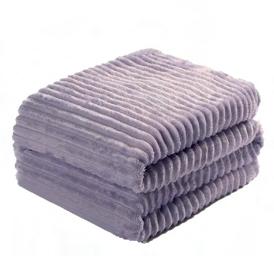


2

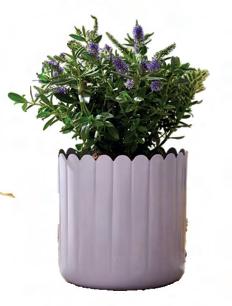


We all know we should eat our fruit and veg, but navigating the world of processed foods can feel like a minefield. Terms like "processed" and "ultra-processed" get thrown around, but what do they actually mean? And why should we be concerned? Let's break it down.
From Processed to Ultra-Processed
What's the Difference?
Processing food isn't inherently bad. Think of milk being pasteurised to make it safe or flour being milled from wheat. These are examples of minimally processed foods. They've been altered from their natural state but still retain their nutritional value. Ultra-processed foods (UPFs), however, are a different beast altogether. They're often packed with ingredients you wouldn't find in your kitchen, like artificial colours, flavours, emulsifiers, and preservatives. Their primary purpose is often to be convenient, cheap, and highly palatable rather than nutritious.
The NOVA System
A Helpful Guide
The NOVA classification system helps us understand different levels of food processing. It categorises foods into four groups, from unprocessed or minimally processed foods (like fruits, vegetables, and grains) to ultra-processed foods. This system helps identify the UPFs lurking in our diets.
Finding Realistic Alternatives
It's easy to say, "Avoid ultra-processed foods," but that can feel overwhelming, especially given how prevalent and accessible they are in our modern food environment. Many UPFs are designed to be convenient and fit into busy lifestyles. So, let's look at some common culprits and their healthier swaps:
UPF: Crisps
Alternative: Homemade popcorn or roasted chickpeas
UPF: Ready meals
Alternative: Batch cooking simple meals like lentil stew or vegetable curry
UPF: Sugary cereals
Alternative: Porridge with fruit and nuts
UPF: Fizzy drinks
Alternative: Water infused with fruit or homemade lemonade
UPF: Processed cheese slices
Alternative: Real cheese, enjoyed in moderation
The Chemical Cocktail What Makes UPFs Problematic?
UPFs often contain a cocktail of chemicals that can negatively impact our health. Here are a few examples:
Emulsifiers are used to combine ingredients that wouldn't ordinarily mix like oil and water, giving UPFs a smooth texture.
Some studies suggest they can disrupt our gut health.They are found in many UPFs, including sauces and processed snacks.
Artificial Sweeteners provide sweetness without calories but can still affect our metabolism and gut microbiome. These can be found in diet drinks and many "low-fat" processed foods.
High levels of added sugars, fats, and salt are often added to UPFs to make them more palatable but can contribute to various health issues. They are common in many UPFs, including sugary drinks, processed meats, and ready meals.
Ultra-processed foods are a relatively new addition to our diets, and scientists are still uncovering the full extent of their impact on our health. By understanding what UPFs are and making simple swaps, we can take positive steps towards a healthier lifestyle.

Every spring, as the world begins to bloom and the days grow longer, you might feel a spark of energy— the urge to refresh your home and your life. Maybe it’s the sunlight revealing the dust on shelves or the feeling of starting anew that comes with the season. Whatever the reason, spring is the perfect time to declutter, creating a home that feels lighter, brighter, and ready for the months ahead. Instead of feeling overwhelmed by the task this year, imagine tackling it thoughtfully, one room at a time. Each space you clear will bring you closer to a home that supports your life and brings you peace.
The living room is the heart of your home, a place to relax, gather with loved ones, and unwind after a long day. But it’s also where clutter tends to pile up—remote controls, books, throw blankets, and random odds and ends. Start small by focusing on one area, like the coffee table, and ask yourself if each item serves a purpose or brings you joy. If not, it’s time to let it go. Sorting items into keep, donate, and toss piles makes the process easier. Clear off surfaces, leaving just a few meaningful pieces, and organise cords to keep them out of sight. Store extra blankets neatly in a basket or closet, creating a calm, relaxing space.
Moving into the kitchen, a cluttered space can make cooking and even grabbing a snack feel overwhelming. Clearing it out will not only make it more functional but can also reignite your love for cooking. Begin with the pantry, tossing expired items and donating unopened ones you won’t use. Group similar items together—snacks, baking supplies, spices—so you can see exactly what you have. Then, turn to your countertops. Consider whether you use each appliance regularly. If that waffle iron or blender has been collecting dust for years, donate it. Keeping only the essentials within reach frees up space, giving your kitchen a fresh, inviting feel that inspires you to try new recipes or simply enjoy a peaceful morning coffee.
Your bedroom should be a sanctuary, a place to rest and recharge, but clutter often gets in the way. Begin with your closet, taking everything out and sorting it honestly. If you
haven’t worn something in the past year or it no longer fits, let it go. Once you’ve pared down, organising by type or colour makes finding what you need easier. Next, turn to your nightstand, keeping only what you use nightly—a lamp, a book, or a glass of water—and clearing away the rest. Lastly, check under your bed. If it has become a catch-all for random items, pull everything out and decide what stays and what goes. With a decluttered bedroom, you’ll enjoy better sleep and wake up feeling refreshed. Kids’ rooms can feel like a never-ending battle against clutter, but with your children’s help, you can create a fun and functional space. Involve them in the process by letting them choose toys to donate, teaching them the value of giving while making room for what they truly love. Sorting the remaining toys into categories— puzzles, action figures, stuffed animals—and storing them in labelled bins or baskets makes cleanup easier. Decluttering their clothes next ensures they only keep what fits and what they actually wear. With a more organised space, their room will be easier to maintain, more enjoyable to play in, and less stressful for you to manage.

Decluttering your home isn’t just about clearing physical space; it’s about creating a space that works for you and supports the life you want to live. A clean, organised home helps you feel calmer and more focused, reducing stress and making it easier to concentrate. You’ll also save time by not having to search for lost items, giving you more freedom to do what you love. Letting go of what no longer serves you makes space for what truly matters, bringing a fresh perspective and renewed clarity. When you finish your spring decluttering journey, your home will feel lighter, brighter, and more welcoming. You’ll have created a space that truly feels like home—a place to relax, recharge, and thrive.

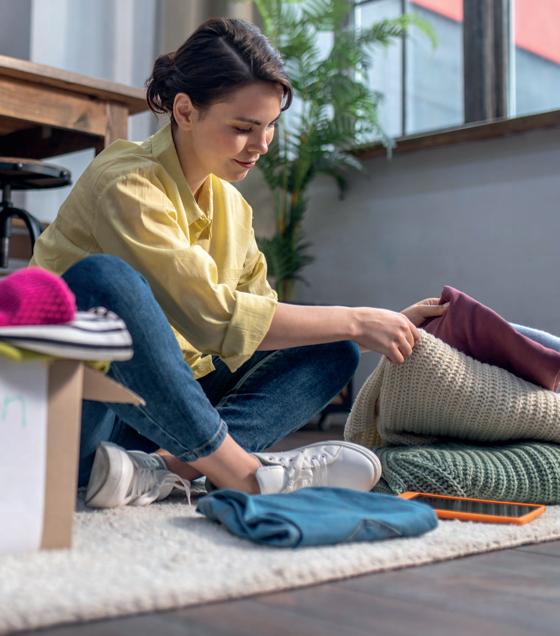


The Salvation Army Charity Shop
Address: 249 Lower Addiscombe Road, Croydon, CR0 6RD
Phone: 020 8676 1921
Accepted Items: Clothing, household items, books.
British Heart Foundation Furniture & Electrical Store
Address: 7-10 Suffolk House & 1st Floor No.6, George Street, Croydon, CR0 1PE
Phone: 020 8712 5420
Accepted Items: Furniture, electricals, and homewares.
St Christopher's Hospice Shop
Address: 48 Church Street, Croydon, CR0 1RB
Phone: 020 3645 8356
Accepted Items: Clothing, accessories, books, bric-a-brac, and homewares.
Croydon Animal Samaritans Charity Shop
Address: 329 Cherry Orchard Road, Croydon, CR0 6BA
Phone: 07784 302899
Accepted Items: Clothing, accessories, books, bric-a-brac, and homewares.
The Chartwell Cancer Trust Charity Shop
Address: 208 Addington Road, Selsdon, CR2 8LD
Phone: 01959 570322
Accepted Items: Clothes, shoes, jewellery, kitchenware, glassware, table linen, bedlinen, crockery, furniture, ornaments, books, pictures, frames, toys, and gifts.
Mind in Croydon Charity Shop
Address: 135 Addington Road, Selsdon, CR2 8LH
Phone: 020 8651 4114
Accepted Items: Clothing, accessories, books, bric-a-brac, and homewares.
Emmaus South London Charity Shop
Address: 275 Lower Addiscombe Road, Croydon, CR0 6RD
Phone: 0300 123 2001
Accepted Items: Clothing, accessories, books, bric-a-brac, furniture, and homewares.
Sense Charity Shop
Address: 41 Central Parade, Croydon, CR0 0JD
Phone: 01689 848008
Accepted Items: Books, bric-a-brac, clothes and accessories, electrical items, furniture, homewares, and music.
Scope Charity Shop
Address: 3 London Road, Croydon, CR0 2RE
Phone: 020 8688 5128
Accepted Items: Books, clothes and accessories, and homewares.
The Garwood Foundation Charity Shop
Address: 294 Lower Addiscombe Road, Croydon, CR0 7AE
Phone: 020 8654 4856
Accepted Items: Clothing, books, and household items.
Age UK Croydon Charity Shop
Address: 2-3 Dingwall Road, Croydon, CR0 2NA
Phone: 020 8680 5450
Accepted Items: Clothing, accessories, books, and homewares.
Welcome to our series START THEM YOUNG on childhood development through activities! As parents, we’re always looking for the best ways to support our children’s mental and physical growth. In this series, we’ll explore different activities that provide real developmental benefits backed by science. Today, we’re diving into gymnastics—a sport that does much more than teach kids how to flip and balance. Gymnastics plays a crucial role in brain development, physical fitness, and social skills, making it one of the best activities for young children. Let’s explore why enrolling your child in gymnastics could be one of the best parenting decisions you can make!

As parents, we all want to give our children the best start in life. That means supporting their physical, cognitive, and emotional growth in effective and enjoyable ways. Gymnastics is much more than just flips and cartwheels—it’s a sport that builds strength, enhances brain function, and teaches valuable social skills. Backed by science, gymnastics is one of the best ways to help young children develop holistically.
Gymnastics, with its unique focus on physical movement, plays a crucial role in how a child’s brain grows. The coordination, balance, and quick decisionmaking required in gymnastics strengthen neural connections in the brain. Studies have shown that children who engage in structured physical activities like gymnastics develop better memory, focus, and problem-solving skills. The combination of movement and mental processing in gymnastics helps improve spatial awareness and motor planning, which are key to academic skills like handwriting and reading. The brain’s ability to form new connections—known as neuroplasticity—is significantly enhanced through activities
that involve complex movement patterns, making gymnastics a powerful tool for cognitive development.
Young children are in a critical period of physical development, and gymnastics provides a well-rounded workout that benefits their entire body. Unlike sports that focus on one particular skill, gymnastics enhances strength, flexibility, and coordination all at once. The various movements involved—jumping, balancing, rolling, and stretching—help build strong muscles and bones, reducing the risk of injury and promoting long-term physical health. Gymnastics is also an excellent way to improve posture and core strength, which not only supports physical activities but also contributes to better focus and endurance in school.
One of the most significant benefits of gymnastics is its impact on a child’s self-confidence. Learning a new skill— whether it’s a simple forward roll or a more advanced balance routine—gives children a sense of accomplishment and boosts their
self-esteem. This confidence carries over into other areas of life, helping them face challenges with resilience. Gymnastics also teaches discipline and focus, as children must follow instructions, practice patience, and work toward goals. Though it may seem like an individual sport, gymnastics is often practised in a group setting, encouraging social interaction, teamwork, and the ability to support and celebrate others. These experiences help children develop important social skills that will benefit them throughout their lives.
Many parents notice positive changes in their children after starting gymnastics. Not only does it help with strength and coordination, but it also improves focus, emotional resilience, and social skills. In today’s digital age, where children are often drawn to screens, gymnastics provides an active and engaging alternative that keeps them moving while supporting their overall development. The best part? It’s fun! Gymnastics is an exciting way for kids to stay active, learn valuable life skills, and develop a love for movement that can last a lifetime.
If you’re looking for an activity that will help your child grow in multiple ways, gymnastics is a fantastic choice. Stay tuned for our next article in this series, where we’ll explore another activity that supports childhood development!
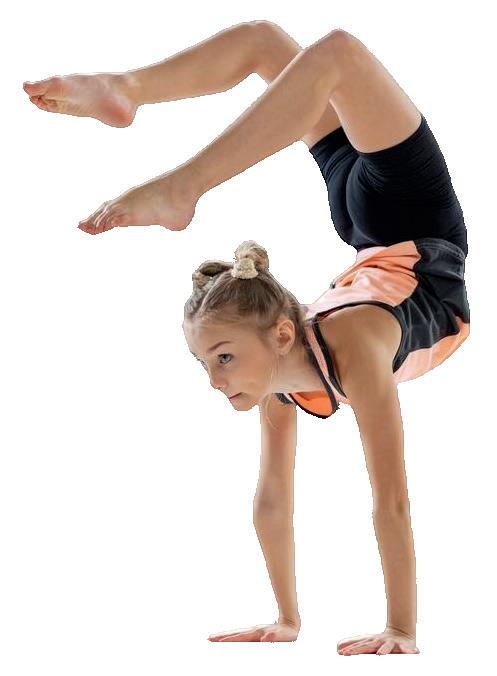
As the chill of winter fades away, fashion lovers eagerly embrace spring's fresh and vibrant trends. Here's a look at some of the top spring 2025 fashion trends you'll want to incorporate into your wardrobe.

Soft, romantic, and universally flattering, powder pink is the colour of the season. From pastel suits to silky slip dresses, this
Once associated with autumn, plaid is making a surprising spring appearance with lighter fabrics and brighter hues. This pattern is being reimagined for the warmer months, from pastel plaid skirts to tailored checkered blazers. Mixing plaids with modern cuts and softer materials gives this classic print a fresh and contemporary feel.
Athleisure continues to evolve with a sophisticated touch, giving rise to the sport-chic trend. This season focuses on tailored joggers, sleek bomber jackets, and structured sneakers paired with unexpected elements like blazers and elegant tops. Think effortless streetwear that fuses comfort with high fashion, making it perfect for both casual and dressy occasions.


Ethereal and whimsical, tulle is making a strong comeback this spring. Designers are infusing their collections with voluminous tulle skirts, sheer overlays, and layered gowns that exude elegance and movement. Whether styled as a romantic evening dress or paired with edgy accessories for a modern twist, tulle adds a dreamy and dramatic flair to any outfit.
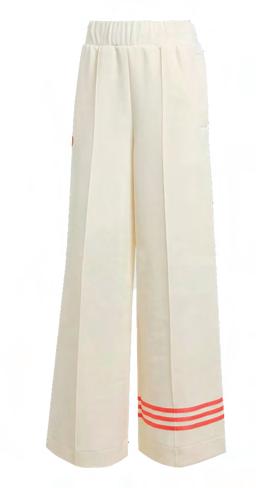
The borrowed-from-the-boys aesthetic remains strong in 2025, as fashion houses embrace androgynous tailoring, oversized blazers, crisp shirts, and structured trousers. This trend is about empowering silhouettes, blending masculine strength with feminine sophistication. Pairing sharpcut suits with delicate accessories or styling a classic button-down with relaxed denim creates a balanced and bold look.

Spring and florals are a timeless duo, and this season brings a fresh take on botanical prints. Designers are experimenting with oversized blossoms, watercolourlike motifs, and three-dimensional floral embellishments. Whether it's a flowy maxi dress adorned with blooming patterns or a floralembroidered denim jacket, this trend embodies the rebirth of nature in a stylish
Spring 2025 fashion is all about versatility, elegance, and unexpected pairings. Embrace the trends, mix and match, and step into spring with confidence and flair!
Croydon Council is considering reinstating a selective licensing scheme for the private rented sector to address poor housing conditions and regulate the sector. This move is part of the council's ongoing effort to raise housing standards across the borough.
The proposed scheme aims to ensure all privately rented properties meet high living standards, supporting responsible landlords and taking action against negligent ones. The majority of private landlords in Croydon offer quality homes, but some properties suffer from issues like damp, mould, fire hazards, and structural instability.

The selective licensing scheme is a proven method to regulate the sector, benefiting both tenants and landlords by improving property conditions. The council has been working to transform its housing service over the past year to ensure safe and quality homes for all residents.
A proposal for the scheme was approved by the Cabinet on 12 February, and the council will consult with both residents and landlords before making a final decision. This initiative is in line with the Executive Mayor's Business Plan 2022-26, which prioritises making Croydon a cleaner, safer, and healthier place to live.


Croydon Archives presents the Archives Can Be Anything exhibition at the Museum of Croydon, running from 26 February to 10 May. This free event features creative work from 10 young local artists, aged 14-18, part of the Young Archivists programme, offering fresh perspectives on the borough’s heritage.
The exhibition is part of the Dynamic Collections project, aimed at digitally transforming Croydon’s archives and celebrating the borough’s year as London Borough of Culture 2023. The Young Archivists programme has provided local youth with the skills to explore Croydon’s history while developing expertise in archiving, digital tools, and project management.
The Young Archivists have created comics, poetry, films, and artwork inspired by Croydon’s archives. Their projects reflect the borough’s diverse history, with workshops covering writing, illustration, design, and collage, blending creativity with historical research.

One notable piece is a comic inspired by a 1998 Croydon Advertiser article about UFO sightings in New Addington, encouraging visitors to think about how the borough welcomes newcomers. Another mixedmedia piece highlights Croydon’s Global Majority population, shedding light on race and racism through underrepresented narratives in the archives.
The exhibition also includes a youthled manifesto, offering a new vision of Croydon’s future through illustrated maps created by the young participants. Young Archivist Randal, 19, explained his UFO comic inspiration: “I was inspired by an article about UFO sightings and imagined what it would be like if aliens came to Croydon. The project showed me how diverse the borough is and how everyone can fit in.”



On 30th March, we honour the incredible women who, as mothers, grandmothers, and mother figures, uniquely shape our lives with love, wisdom, and unwavering strength. You are the heart of every family, the quiet heroes who nurture, guide, and inspire us every day. Your love knows no bounds, and your sacrifices never go unnoticed.
From the first comforting hug to the countless lessons in kindness and resilience, mothers give endlessly without expecting anything in return. Your love is a powerful force that shapes our lives, your strength in difficult times, warmth in moments of need, and unconditional love are the foundation upon which dreams are built.
On this special day, we celebrate and appreciate you—not just for what you do but for who you are. May your day be filled with love, joy, and the recognition you truly deserve.
Wishing all mothers a beautiful and love-filled Mother’s Day!
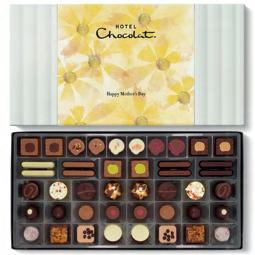






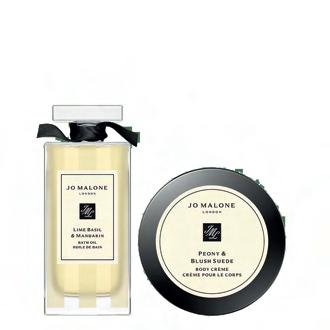


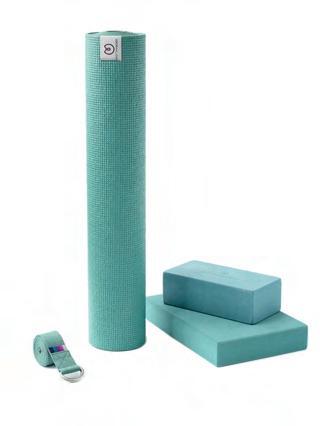



Earth Day is observed annually on 22nd April, marking a global commitment to environmental protection. Established in 1970, it has grown into a worldwide movement, engaging over a billion people across more than 193 countries. This year marks the 55th anniversary, centring on the theme “Our Power, Our Planet™,” highlighting our collective influence in safeguarding our environment.
The significance of Earth Day lies in its ability to unite individuals, communities, and nations in addressing crucial environmental issues and challenges. Whether climate change, deforestation, pollution or biodiversity loss, our planet’s problems are multifaceted and require a coordinated effort. Earth Day serves as a reminder that our planet’s health is intrinsically linked to our well-being and that of future generations.
As residents, there are several steps we can take to contribute positively all year around:
Minimise waste by adopting sustainable consumption habits. Opt for reusable products, recycle materials appropriately, and reduce reliance on single-use plastics.
Simple actions like turning off unused appliances, switching to energyefficient lighting, and insulating homes can significantly reduce energy consumption.
Support Local Initiatives
Engage with community projects focused on tree planting, clean-up drives, or conservation efforts. Collective local actions can lead to substantial environmental benefits.
Educate and Advocate
Stay informed about environmental issues and share knowledge within your networks. Advocate for policies and practices that promote sustainability at local and national levels.
Are you feeling inspired to take further action? Why not consider organising a community event? It could be a workshop, a nature walk, or even a neighbourhood clean-up; all efforts and initiatives help the cause. You can plan and register your event through Earth Day’s official platform at earthday.org, ensuring it gains visibility and support. There are also many resources like quizzes, fact sheets and more to help you get started.
Earth Day shows that small actions, like tiny ripples, can create waves of change. By swapping wasteful habits for sustainable ones and joining local efforts, we can help ensure our planet stays in good hands for generations to come.

An
By Daniela Milusheva
What does it take to lead a school while raising a family? We meet with Vanessa Townsend, the Headteacher of Strand on the Green Infant and Nursery School, an inspiring educator and mother, to discuss the challenges and rewards of her dual role, the values she instils in children, and the role models who have influenced her path.

Q: Can you tell us about your journey into teaching and how you became the Headteacher at Strand Infants?
I've been at the school for 22 years. I previously worked in Richmond for about three years, and then I went travelling for a year. I wasn't sure whether I wanted to continue teaching because teaching is an incredibly huge responsibility. When I came back from travelling, I decided that this was what I wanted passionately and I saw the advert for this job, which was an infant and nursery school, and I thought, what an amazing thing to do. I came in as a reception teacher, then an early years leader, then an assistant head, then a deputy head and in 2016, I went for the headship. I couldn't miss the opportunity to be head at this school because we've worked so hard to make the ethos what they are –about young children, about active playbased learning, and now more and more outdoor learning.
My Strand Infants colleagues are like a second (professional) family who constantly impress and surprise me, going above and beyond to make a difference. This shared passion and drive is quite infectious and keeps us all growing together and challenging ourselves, even though many of us have worked together in the school for a long time.
Q: How do you navigate the challenges of balancing your leadership role with being a mother? I do not compartmentalise my life, it's very overlapping. Some people will say work is work, set a line, and then home is
home. I don't actually do that because it overlaps nicely. I've got all these school values and all the training that we have on relationships and behaviour. That all helps you as a mum. Also, I work 4.5 days a week, and that half day is invaluable. It's a Wednesday afternoon, but I can move it around, which is brilliant. So if my child has an assembly or a sports morning or if there could be anything else I can be present for. It's also about prioritising. Sometimes, I feel like I'm spinning plates—at school, keeping the staffing going, keeping the curriculum going, keeping the finances going, at home, keeping my daughters happy, and keeping my son’s homework going. Sometimes, you have to focus on one thing and then move on to the other one. At different times, you prioritise different parts of your life, and that's okay.
You don't have to be perfect all the time. If you always try to be perfect in everything, you're too stressed. And you're not having a happy life. There's a book about being a good enough parent. If you're a good enough parent most of the time, you've got to forgive yourselves for the moments when you're not perfect and release yourself from the guilt and then it'll be happier for everybody.
I went to a private school for girls. And we were all taught that we could do anything. That we were all taught to be confident. We were all taught to get A's. We're all taught to go to university and do our best and that we will be doctors, lawyers, head teachers. There was one thing that was never ever mentioned at school – that we would be mums. We had a reunion recently, and we were all just saying it's been so hard
You don’t have to be perfect all the time. If you always try to be perfect in everything, you are too stressed. “ “
to balance work and motherhood, and some have given up their careers. So we're teaching girls values. We're teaching how to communicate. We teach people many skills to be empowered with, but we never actually explain that this will be quite hard. Being a working mum changes your parenting style. Of course, you still love your children, 100%. But sometimes, you're not overthinking things because you're so busy. You're not overanalysing. You're not over-reflecting. And so you're able to give your children space. My children are all really confident, independent, resilient and happy - perhaps because I haven't had a massive capacity to worry or overprotect. I am hugely proud of their ability to relate to others, be kind, and be themselves in many different situations. They are also completely different characters and make us laugh a lot.
Q: How important is a strong support network in managing both roles?
Very important. I have a very supportive husband. He is a very busy partner in a law firm. We have to be supportive and flexible for each other. There are always times when one of us has to prioritise work over family, but together, we can compromise and make everything work. The children are older, and they help as well. My daughters can make a

little bit of food. I have supportive friends, extended family, and really supportive colleagues. This school works as a brilliant team. I've got a brilliant deputy, Ms Bhatti. I know when I'm not here, she's completely capable.
Hounslow's Headteacher colleagues are a very close-knit, supportive group who all understand the joys and challenges of this unique role that carries great responsibilities and potential stress. We work closely, collaboratively and honestly with one another. When I first came into the role, I was younger than most, and many of the older mums in the group encouraged and advised me with their own experiences and convinced me that it really was possible to do both - lead a school well and be a great mum. In fact, they told me that with time, the roles would grow to complement each other. I now mentor other new Heads and hopefully send them the same confident, positive message.
Q: What was the most challenging moment in your journey as a working mum?
The only moment I questioned whether I could do it was when I came back after my second maternity leave. My girls are very close in age, only one year apart. I was deputy head, and I said to my head at the time, I don't think I can do it. I can't come back. I can't possibly do this four days a week and have two tiny children. And he said at the time, that's okay, I'll have you three days. And that got me back in. Within a year, I was able to do four days again.
Q: How does your role as a teacher influence your parenting, and vice versa?
I feel I employ some of the teaching strategies with my children, which helps me connect, listen, and understand. But being a mum definitely helps you to be a better teacher because it helps you understand other parents, the children, and how it feels to be a parent and be on the other side.
Q: What are some of the challenges you've faced as a female in a leadership position?
It's hard sometimes. It is hard to be a leader and role model all the time. You have to be tough, and you don't take time off. You do feel a responsibility to be present and

always do the best you can. Sometimes, as a mother, you don't feel you've got quite the time to be at home, for example, if your child is sick. Thankfully, my husband helps with that.
But an ex-head teacher in another school, Cavendish Head, about 15 years ago, told me never to give up trying to get headship. She said her children look back and talk to her about how proud they are of her. She thought it was really important to keep going as a leader, as a school head. She said your family actually admires that. And I think most of the time, my family does.

Q: You are a role model for many. Who have been the key role models in your life?
I also really like the feeling of being part of the community; that's one of the best things about being the head of a school. I never wanted to do the executive headship or haven't been tempted to work in the local authority because I love this job, the community, and knowing people well. It's quite a maternal figure being a Head, not just to the children but to some of the younger parents as well, who want a bit of support, and to the school staff as well.
One of the best things about being the Head of a school is being part of the community “ “
Q: What do you find most rewarding about being a Headteacher?
It's the outcomes for the children. You want young adults to be happy, have good relationships, be successful, be ambitious and confident, and all of these things are what we actually want for our five-yearolds. It's in our curriculum. There are many stories where I will see children or families out on Chiswick High Road, and I'll hear that they've gone to university or they're doing a job that they love, and that's really rewarding. Yes, academics are really important, but they're not as important as the values and the softer skills. Because I know what an employer is looking for. And if you want to have a happy life, academics have to happen, yes. But if you don't have all of the other stuff, then life doesn't work out in a happy way for you.
We all work hard as staff. We benefit from longer holidays, but term times are tough, and we work long hours. A 60-hour week is not unusual (and there is little downtime in this; it is really 'full on'). However, workload is different from fulfilment. The sense of purpose, pride, and satisfaction in what we do at Strand Infants more than makes up for working hard. Our Strand families are very involved and make us feel so very appreciated.
One of my first role models was my grandmother. She was a civil servant. It was very rare then that you would keep working when you got married; probably one in 100 women would do that. But she worked for the government, went to central London every day, and adored her job. So, even when I was little, she was still working.
But I am surrounded by inspirational female role models. Our Senior Leadership team, business manager, and even our site manager are all women and absolutely fantastic at what they do. My Chair of Governors is a great working mum, role model, and support to me, too.
Q: What do you enjoy doing in your free time to relax and recharge?
I do go swimming. I love outdoor swimming. I like active holidays. We love skiing as a family. We make the very most of the holidays. We go to America to see our in-laws. We go backpacking as a family in Asia. We do that quite a lot. So we're quite brave as a family as well and enjoy each other's company.
Q: What advice would you give to other working mothers who are trying to balance their careers and family life?
Sometimes you feel like you don't do anything properly as a working mum, but actually, you need to recognise what you do for your children and for your career and be proud. Be as present as you can in each role you have. When you are being a mum, immerse yourself in the fun, listen to your children and engage as much as you can; their childhood goes so quickly. And when you are working, allow yourself to be fully engrossed and engaged. And when the boundaries blur. Do not succumb to the guilt of being mum/work ; you are doing the best you can.




Waddingham Night Out in London with Thames Dinner Cruise for Two


1. Follow our Instagram page.
2. Send an email to giveaway@localgreenguide.co.uk with the subject heading as, Virgin Experience Days Giveaway. Provide your details (full name, full address, contact number, email and Instagram account name).
If you already follow our Instagram page, don’t worry – you can still enter the Giveaway, by following Step 2. Simply follow the
draw will take place on Monday 14th April 2025. The winners will be announced on Tuesday 15th April 2025. There is a limit of one entry per household.












By Vandita Rai
Hong Kong, a vibrant metropolis where East meets West, is a city that never ceases to amaze. My journey through this refreshing hub was filled with unforgettable experiences, stunning sights, and delicious culinary delights.
My adventure began at Victoria Peak, the crown jewel of Hong Kong’s skyline. As I ascended in the historic Peak Tram, the anticipation built with every passing moment. Once at the top, I was greeted by a breathtaking panorama of the city sprawled below, framed by lush mountains. This spot is an absolute must for anyone visiting Hong Kong, offering not just a view but a profound sense of the city’s grandeur.

Cultural Richness at Wong Tai Sin Temple Next on my itinerary was the serene Wong Tai Sin Temple. This vibrant Buddhist temple is known for its stunning architecture and the practice of fortunetelling. As I wandered through the intricate halls adorned with colourful decorations, I felt a deep connection to the local culture and spirituality. Observing worshippers lighting incense and praying added to the atmosphere of reverence and community.
Walking through the gates of Hong Kong Disneyland, I felt that familiar spark of excitement—the kind you get when you know you’re about to experience something magical. There’s something about Disney that brings out the kid in everyone, and here, in the heart of Hong Kong, that magic comes with a unique local twist.
The first thing that hit me was the atmosphere—cheerful music playing in the background, the smell of sweet popcorn in the air, and families posing for photos in front of Sleeping Beauty Castle. I couldn’t resist stopping for a picture myself, caught up in the energy of it all.
One of the highlights for me was Mystic Manor, a ride you won’t find in any other Disneyland. I had no idea what to expect, but the moment the doors shut, and our little carriage started moving on its own, I was hooked. The mix of stunning visuals, storytelling, and a touch of humour made it
unforgettable. Another surprise was seeing dim sum shaped like Disney characters— where else can you eat a Mickey-shaped bao bun?



Looking for a mix of adventure and wildlife, I made my way to Ocean Park, one of Hong Kong’s most beloved attractions. When I arrived, I was surprised by how much there was to see and do. I had the choice of adrenaline-pumping rides or up-close encounters with incredible animals, mammals and wildlife.
My favourite attraction was the Grand Aquarium in Aqua City. It was enormous and filled with vibrant marine life. I watched many varieties of fish glide past, and coming face-to-face with a giant manta ray was an experience I shall never forget— they are stunning. The rest of the day I spent walking and shuttle busing around the park. There was so much to see and do, including watching the pandas lounging around without a care in the world!

There is plenty to do in Hong Kong at night, with an array of bars, clubs, and excursions available. One night, I headed to Temple Street Night Market, one of Kowloon’s busiest spots. The place was packed—locals and tourists browsing stalls, the smell of street food wafting through the air, and vendors shouting out their latest deals. Weaving through the tightly packed stalls, I spotted everything from quirky souvenirs to knockoff designer bags, all up for a goodnatured haggle.
Tucked between the stalls, fortune tellers sat under glowing lanterns, reading palms and deciphering tarot cards. The mix of old traditions and the market’s fast-paced energy made it feel like a perfect snapshot of Hong Kong’s street culture. Temple Street

at night is an experience—lively, chaotic, and 100% worth a visit.
No visit to Hong Kong would be complete without experiencing Victoria Harbour. The promenade offers stunning views of Hong Kong Island’s skyline, especially during the evening when the city lights up in a spectacular display. I found myself captivated by the free Symphony of Lights show that illuminates the skyline with lasers and lights—a perfect way to end my day.
On my last day, I took a ferry to Lantau Island to visit the majestic Tian Tan Buddha, also known as Big Buddha. The statue stands 34 meters tall and can be reached by climbing 268 steps. The serenity of the surrounding area and the Po Lin Monastery made this excursion a peaceful retreat from the city’s hustle.
Hong Kong is more than just a travel destination; it’s an exhilarating blend of cultures, sights, and tastes that leave an indelible mark on your heart. From stunning views atop Victoria Peak to the lively streets of Kowloon, each experience adds a unique layer to your understanding of this remarkable city. Whether you’re seeking adventure or tranquillity, Hong Kong has something special waiting for you around every corner.
By D.M.

Have you ever felt frustrated after hearing "Mummy" for the hundredth time in a day? Are there moments when everything irritates you— the TV blaring, the noise from outside, even the birds singing? I know I have. And then, there are those times when I've snapped at my loved ones—sometimes shouting, other times withdrawing into myself—only to be left drowning in guilt afterwards, wondering why I got so angry in the first place. But
here's the thing, dear mums: we are not angry. We're overstimulated.
We don't talk about this enough, but we should. You're not alone in feeling this way. I see you, and I feel you. Many of us live with this undercurrent of frustration, an irritability that seems to bubble up without warning. But the truth is, it's not anger at our children, our partners, or our lives. It's the result of being overwhelmed—by

noise, demands, and the constant need to be everything for everyone. Just as overstimulation can send a child into a meltdown, it can also bring us, as mothers, to our knees. Recognising this can help us be kinder to ourselves as we navigate the endless demands of motherhood.
From the moment our eyes open in the morning until we finally collapse into bed at night, we are on call. Our children need us for meals, homework help, emotional support, a kiss for a scraped knee, a toy retrieved from under the couch, a glass of water at bedtime. Our partners, too, look to us for companionship, for managing the household, and for shared responsibilities. We are caretakers, nurturers, and problemsolvers, often without a break. It's no wonder we sometimes feel like we can't catch our breath, like there's no room left in our heads for our thoughts, let alone any sense of peace. And if you're a working mum, that feeling of overload is multiplied as you juggle the expectations of your job with everything else on your plate.
Overstimulation isn't just a buzzword—it's a real and often overwhelming experience. It happens when we're bombarded with more sensory input, emotional demands, or responsibilities than we can manage. For us mothers, it often means living in a world of constant noise, facing a never-ending to-do list, and shouldering the emotional labour of keeping a household and family running smoothly. Unlike a typical job where you can clock out and leave your work behind,

motherhood is relentless. It's a 24/7 gig that doesn't allow for breaks, and constant pressure can lead to overstimulation.
When overstimulated, it's easy to mistake irritation or frustration for anger. We might snap at our children or our partners and then feel terrible about it later. But in reality, it's not anger—it's the exhaustion of being constantly needed, of never having a moment to ourselves. It's being drained, not by any one thing but by the cumulative effect of everything.
For single mothers, this experience can be even more intense. Parenting responsibilities, running a household, and possibly working outside the home can feel unbearable without a partner to share the load. The weight of it all can lead to an even deeper sense of exhaustion and overstimulation, making it crucial to find ways to lighten the burden.
Here's something I've learned: taking care of ourselves isn't just necessary; it's an act of survival. Whether it's savouring a quiet cup of coffee in the early morning before the rest of the house wakes up, sneaking away for a short walk alone, or simply taking a few deep breaths when the noise and demands get too much—these small acts of self-care can make a world of difference.
Communicating openly with our partners and children about our need for personal space can help, too. It's okay to ask for time alone, to set boundaries, and to make it clear that we can't pour from an empty cup.
The more we express our needs, the more we help those around us understand that a well-rested, balanced mother is better equipped to care for everyone. Having a support system—whether it's family, friends, or even an online community of other mums—can be a lifeline. Sharing the load, asking for help, and knowing we're not alone in this struggle can provide the relief we desperately need. Joining a mothers' group in person or online can offer a sense of solidarity and provide practical tips for managing the chaos. Even arranging childcare swaps with other moms can give us those precious few hours to recharge.
Exploring flexible work arrangements might also help create a better work-life balance. Working from home or adjusting your hours could give you more breathing room, more time for self-care, and more opportunities to be present for your family without feeling overwhelmed. Employers are becoming more aware of the importance of work-life balance, and it's worth having a conversation about your options.
Taking small moments throughout the day to reset can also help. Deep breathing exercises, listening to calming music, or even stepping outside for a few minutes to feel the fresh air can make a big difference. Prioritising sleep, even if it means letting go of a perfectly clean house for an extra hour of rest, can help us feel more equipped to handle the daily grind.
It's time we start talking openly about what we're going through. Our partners, families, and society must understand that when we seem overwhelmed, it's not because we're angry at our loved ones. It's because we're trying to navigate the relentless demands placed on us, often with little support or understanding.
Empathy can make all the difference. When those around us acknowledge what we're going through, offer support, and give us the space to breathe, it lightens the load. A simple "How can I help?" or "I see how much you're doing, and I appreciate you" can go a long way in making us feel valued and supported.
We also need to extend that empathy to ourselves. Instead of beating ourselves up for moments of frustration, we can remind ourselves that we are human, doing the best we can with the resources we have. Recognising that overstimulation, not anger, is at the root of our struggles can help us reframe our experiences and approach them with more self-compassion. So, to every mum reading this: I see you. You are not alone. And it's okay not to be okay sometimes. It's okay to ask for help, to take a break, and to remind yourself that you're not angry—you're just overstimulated. And that's something we can work through together.


There's something magical about kids diving into a good book. In a world dominated by glowing screens, holding an actual book in your hands feels special. But beyond the warm and fuzzy nostalgia, reading paper books brings many real, life-changing benefits for kids. Books are like secret superpowers wrapped in a cover, from building better brains to sparking endless imagination.
Let's start with what science says. When kids read physical books, their focus improves. Unlike screens, which practically scream for your attention with pop-ups and notifications, a book invites kids to slow down, turn the pages, and really soak in the story. Research from neuroscientists at Columbia University's Teachers College shows that reading on paper boosts comprehension and memory, partly because our brains create a mental map of where things happen in the book. That means kids are more likely to remember the adventures they've read about and carry those lessons into real life.
Now, let's talk about imagination. Books are the ultimate creative playground. When kids read, they aren't just consuming words—they're building entire worlds in their minds. A dragon might have glittering green scales in one kid's imagination and shimmering blue ones in another's. There
are no limits! This active engagement stretches their creativity, helping them think outside the box in other areas of life, whether solving problems, writing their own stories, or dreaming up inventions.
Books also help kids understand emotions— both their own and others'. When a character faces a challenge, feels scared, or celebrates a big victory, young readers experience those feelings, too. This builds empathy, helping them connect with people in real life. Plus, books can offer a safe space to explore tricky subjects or even help kids process their own emotions, giving them tools to navigate the world.
But it's not just about what's happening inside their heads. Reading paper books comes with physical perks, too. Unlike screens, which can strain young eyes and mess with sleep, books are easy on the eyes and perfect for winding down at the end of a long day. Holding a book, turning its pages, and seeing how far they've come also gives kids a sense of accomplishment that you just don't get with scrolling.
Of course, getting your child hooked on reading might seem easier said than done. Start by making books part of your everyday life. Create a little library in your home, filled with books that match your child's interests—dinosaurs, space adventures, magical worlds, or even
wacky joke books. The key is letting them choose books that excite them. Visits to the library or bookstore can be an adventure in themselves. Let your child explore the shelves and pick out their own treasures.
Reading together is not just a way to spark your child's interest, it's also a fantastic way to bond as a family. Discuss the plot, guess what might happen next, or laugh over a funny character. And if bedtime reading doesn't work for your schedule, any time is a good time—before dinner, on a lazy Sunday morning, or even in the car (with books, audiobooks, or both!).
Lastly, as a parent, you have the power to set the stage for your child's reading journey. Create a cosy reading nook with soft cushions, blankets, and good lighting. Make it a place where your child wants to curl up with a book. And don't forget to lead by example—when kids see you enjoying a book, they're more likely to follow suit.
At the end of the day, books do more than entertain—they open doors. They teach kids about the world, other people, and themselves. They inspire creativity, build empathy, and provide a screen-free escape that's both relaxing and enriching. So, grab a book, snuggle up, and let the adventure begin. Who knows where the next chapter might take them?
This Easter, gather the family in the kitchen to create delightful treats together. The easy recipes make it fun for everyone, whether you’re rolling out dough for decorated biscuits or mixing ingredients for a rich carrot cake.

Prep: 25 mins Serves 10 - 12 Cook: 1 hr and 10 mins
Bake a simple and stunning carrot cake with cream cheese frosting for an afternoon tea or mid-morning treat. It tastes even better a day or two later
Ingredients
• 175ml vegetable oil, plus extra for the tin
• 75g natural yoghurt
• 3 large eggs
• 1 tsp vanilla extract
• 200g self-raising flour
• 250g light muscovado sugar
• 2 tsp ground cinnamon
For the icing
• 100g slightly salted butter, softened
• 200g icing sugar
• 100g full-fat cream cheese
Method
STEP 1
Heat oven to 180C/160C fan/ gas 4. Oil and line a 900g loaf tin with baking parchment. Whisk the oil, yoghurt, eggs and vanilla in a jug. Mix the flour, sugar, cinnamon and nutmeg with a good pinch of salt in a bowl. Squeeze any lumps of sugar through your fingers, shaking the bowl a few times to bring the lumps to the surface.
STEP 2
Add the wet ingredients to the dry, along with the carrots, raisins and half the pistachios. Mix well to combine, then scrape into the tin. Bake for 1 hr 10 mins or until a skewer inserted into the centre of the cake comes out clean. If any wet mixture clings to the skewer, return to the oven
• ¼ fresh nutmeg, finely grated
• 200g carrots (about three), grated
• 100g sultanas or raisins
• 100g pistachios, finely chopped (or slivered if you can get them)
• 100g fondant icing or marzipan
• orange food colouring

for 5 mins, then check again. Leave to cool in the tin.
STEP 3
To make the icing, beat the butter and sugar together until smooth. Add half the cream cheese and beat again, then add the rest (adding it bit by bit prevents the icing from splitting). Remove the cake from the tin and spread the icing thickly on top. Scatter with some of the remaining pistachios. Dye the fondant or marzipan orange by kneading in a drop of food colouring. Roll into little carrot shapes, then use a skewer to make indentations and poke a few pistachios in to look like fronds. Top the cake with the carrots, then serve. Will keep in the fridge for up to five days (eat at room temperature).
Prep: 1 hr and 15 mins Makes 18
Cook: 30 mins
Bake our easy Easter biscuits then choose from two options to decorate them – or you can halve the amounts of jam and icing sugar and make both.
Ingredients
• 300g plain flour plus extra for dusting
• 150g white caster sugar
• 150g slightly salted butter chopped
• 1 large egg
• 2 tsp vanilla extract or vanilla bean paste
Method
STEP 1
Weigh the flour and sugar in a bowl. Add the butter and rub together with your fingertips until the mixture resembles wet sand, with no buttery lumps. Beat the egg with the vanilla, then add to the bowl. Mix briefly with a cutlery knife to combine, then use your hands to knead the dough together – try not to overwork the dough, or the biscuits will be tough. Shape into a disc, then wrap in cling film and chill for at least 15 mins. Heat oven to 180C/160C fan/gas 4. Line two baking sheets with baking parchment.
STEP 2
Dust a work surface with flour. Halve the dough, then roll one half out to the thickness of a £1 coin. Use an egg-shaped cookie cutter (ours was 10cm long; you could also make a cardboard template to cut around) to stamp out as many cookies as you can, then transfer them to one of the baking sheets, leaving a little space between the biscuits. Repeat with the other half of the dough. If you want to make jammy biscuits, use a small circular cutter to stamp holes in half of the biscuits (where the yolk would be). If you intend to make both iced and jammy biscuits, only stamp holes in a quarter of the biscuits.
STEP 3
Bake for 12-15 mins, until the
For the iced option
• 500g royal icing sugar
• your favourite food colouring gels
For the jammy middle option
• icing sugar for dusting
• 400g apricot jam or lemon curd
biscuits are pale gold. Cool on the sheets for 10 mins, then transfer to a wire rack to cool fully. Once cool, decorate to your liking (see next steps). Will keep in an airtight container for up to five days.
STEP 4
To decorate the biscuits with icing, add enough water to the icing sugar to make a thick icing – it should hold its shape without spreading when piped. Transfer about a third of the icing to a piping bag fitted with a very small round nozzle (or just snip a tiny opening at the tip). Pipe an outline around the biscuits, then draw patterns in the middle – lines, spots and zigzags work well. Leave to dry for 10 mins. Divide the remaining icing between as many colours as you’d like to use, then use the gels to dye them. Loosen each icing with a few drops of water, then transfer them to piping bags. Use the coloured icing to fill the empty spaces on the biscuits. You may need to use a cocktail stick to tease it into the corners. Once covered, leave to dry for a few hours.
STEP 5
To make the jammy middle biscuits, dust the biscuits with holes in the middle with a heavy coating of icing sugar. Spread the jam or curd generously over the whole biscuits, then sandwich the dusted biscuits on top of them.







